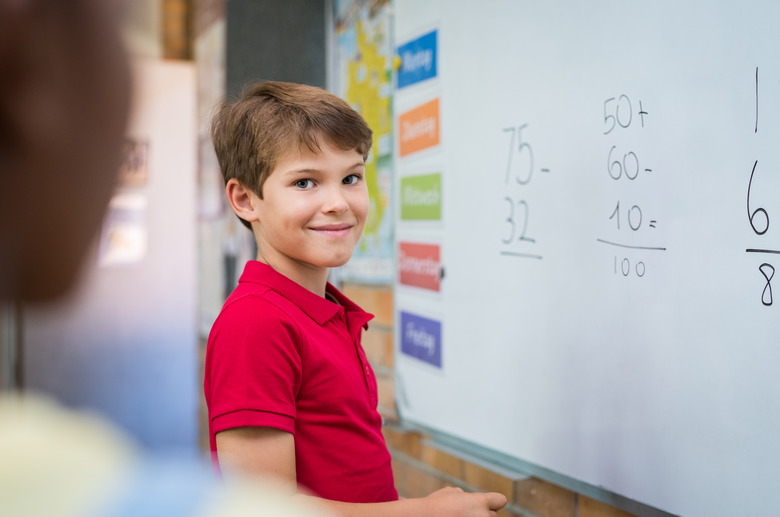Math Algorithms For Elementary Students
This informational guide lists the main areas of elementary math algorithms. Math algorithms are step-by-step procedures specifying how to solve a problem, and the most common of them are the four basic procedures: addition, subtraction, multiplication and division.
Significance
Significance
Acquiring problem-solving skills via math algorithms taught during elementary school sets children up for better problem-solving skills in later school and in the workforce.
Types
Types
The basic math algorithms are addition, subtraction, multiplication and division.
Real World Applications for Kids
Real World Applications for Kids
Elementary school children learn math algorithms more easily by relating math algorithms to real-life situations, which can serve as models for math, such as sharing and borrowing.
Applying Addition
Applying Addition
A child's understanding of addition can be fortified by a real-life application, such as giving pencils to a friend in need.
Applying Subtraction
Applying Subtraction
A real-life situation, such as borrowing a candy bar from a friend, can help a child better understand subtraction.
Applying Multiplication
Applying Multiplication
Here is an example model for multiplication for a child: "You have two candy canes, and two of your friends, who also have two candy canes, give you their candy canes, which gives you a total of six candy canes."
Applying Division
Applying Division
Sharing a 12-slice pizza among six friends is an ideal way to exemplify division to a child.
Cite This Article
MLA
Writer, Contributing. "Math Algorithms For Elementary Students" sciencing.com, https://www.sciencing.com/math-algorithms-for-elementary-students-12741202/. 12 February 2009.
APA
Writer, Contributing. (2009, February 12). Math Algorithms For Elementary Students. sciencing.com. Retrieved from https://www.sciencing.com/math-algorithms-for-elementary-students-12741202/
Chicago
Writer, Contributing. Math Algorithms For Elementary Students last modified August 30, 2022. https://www.sciencing.com/math-algorithms-for-elementary-students-12741202/
